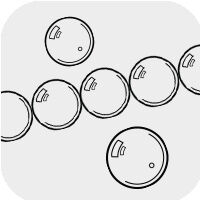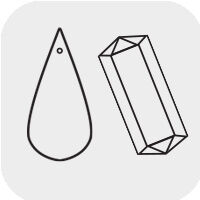Aventurine
Meaning and Properties
Aventurine History
Aventurine gets its name from the Italian word "avventura"--by chance, risk or luck. Its name is tied to the creation of goldstone, and the name for the manmade material was transferred to the natural material once the gemstone was identified.
We were told that centuries ago, Tibetans decorated their statues with the stone we call aventurine, used most often in the eyes, so each shimmer of light increased the statue's visionary powers. Until the 19th Century, aventurine was called the "stone of the Amazons," as the deposits in Brazil were thought to have supplied the jewels of Amazon warrior queens.
Aventurine has a number of bynames and trade names, including adventurine, adventurine quartz and Indian "jade." Besides being used for beads and jewelry-making, aventurine is also carved into ornamental or décor pieces such as bowls, vases and statuettes. It has occasionally appeared in landscaping and as building material for monuments.
The name Aventurine has been used by Venetian glassmakers, credit card processing companies, video game developers and even private equity firms.

Join us to discover the history, beauty, and intriguing qualities of green aventurine. Learn from Dev, our graduate gemologist, who will be joining us to impart valuable insights on designing with and caring for this stone. Plus, stay tuned for a quick and delightful necklace project that you can craft in just minutes using this spectacular gemstone.
Aventurine Metaphysical Properties
Though there isn't a "d" in the word, aventurine makes wearers think "adventure." Think optimism. Think bountiful. Think practical enthusiasm. This stone is believed to be a positive stone of prosperity, diffusing negative emotions, reinforcing leadership, promoting compassion and encouraging perseverance. It is a stone used to promote open-mindedness and the ability to see alternatives and possibilities, which is why it is considered a lucky stone for gamblers!
Specific colors of aventurine are thought to have additional properties:
- Blue: promotes mental healing
- Green: eases mental and emotional trauma, dissolving negative thought and bringing calm
- Red: boosts creativity, vitality and sensuality
Aventurine Geological Properties
This quartz-based gemstone is known for its bright inclusions and glistening or shimmering effect (aventurescence). This effect comes from the presence of chrome-bearing fuchsite, which adds a silvery green or silvery blue sheen to the stone. Red, orange and brown types of aventurine are created when hematite or goethite is present instead of fuchsite.
Aventurine has been discovered as beads, talismans and tools in archaeological digs as far back as the Omo Valley in Ethiopia (2.5 million years). We've been using aventurine (no matter what we called it) for a very, very long time! Aventurine's superiority for tool-making is due to its hardness and the inherent isotropic brittleness which makes it easy to shape.
Aventurine is found in Europe, India, Chile, Tanzania, Brazil and across northern Asia (including China, Nepal, Tibet and Russia).
|
|
|
|
|
|
|
|
|
|
|
|
|
|
|
|
|
|
Proper Care of Aventurine
Aventurine can fade with prolonged exposure to the sun, so store gems in a dark place. It also reacts to extreme temperatures, so keep this gemstone off the dash of your car in summer or in winter. Be sure to clean this gemstone in warm soapy water and a soft cloth or brush. This gemstone's hardness makes it durable, but it can be sheared, so keep it separate from other gemstones. Keep away from household chemicals.
To learn more about aventurine and other gemstones, order your copy of Walter Schumann's revised and expanded edition of Gemstones of the World.
Designing with Aventurine
Its many metaphysical qualities--as well as its natural beauty--makes aventurine a popular gemstone for jewelry designs. While some artists prefer to use aventurine for rosaries or mala prayer beads, others choose the stone for its color and shimmering glitter.
Green is the most common hue for this stone, which offers a range of design options. Mix with crystals or cultured freshwater pearls for a classic look, with Czech pressed glass for something fresh and springtime, in a blend of multiple colors of aventurine together for goes-everywhere-with-everything style and more.
View more resources featuring aventurine, including Design Ideas, Videos, Tutorials and more!
Shop for Aventurine
**Please note that all metaphysical or healing properties listed are collected from various sources. This information is offered as a service and not meant to treat medical conditions. Fire Mountain Gems and Beads® does not guarantee the validity of any of these statements.
How did you like this resource? Your feedback helps us provide resources that matter to you most.
Copyright Permissions
All works of authorship (articles, videos, tutorials and other creative works) are from the Fire Mountain Gems and Beads® Collection, and permission to copy is granted for non-commercial educational purposes only. All other reproduction requires written permission. For more information, please email copyrightpermission@firemtn.com.



